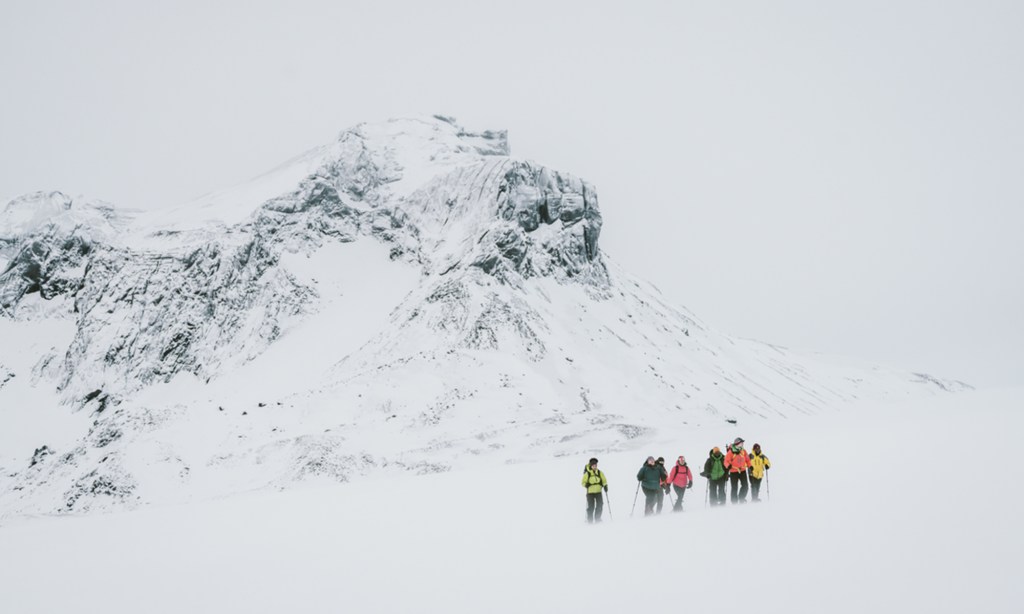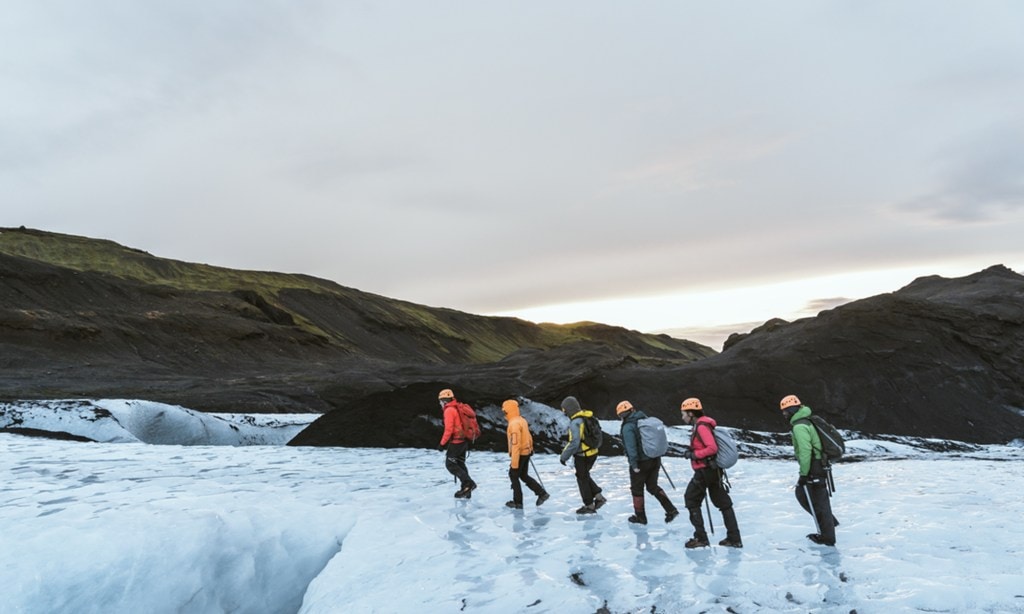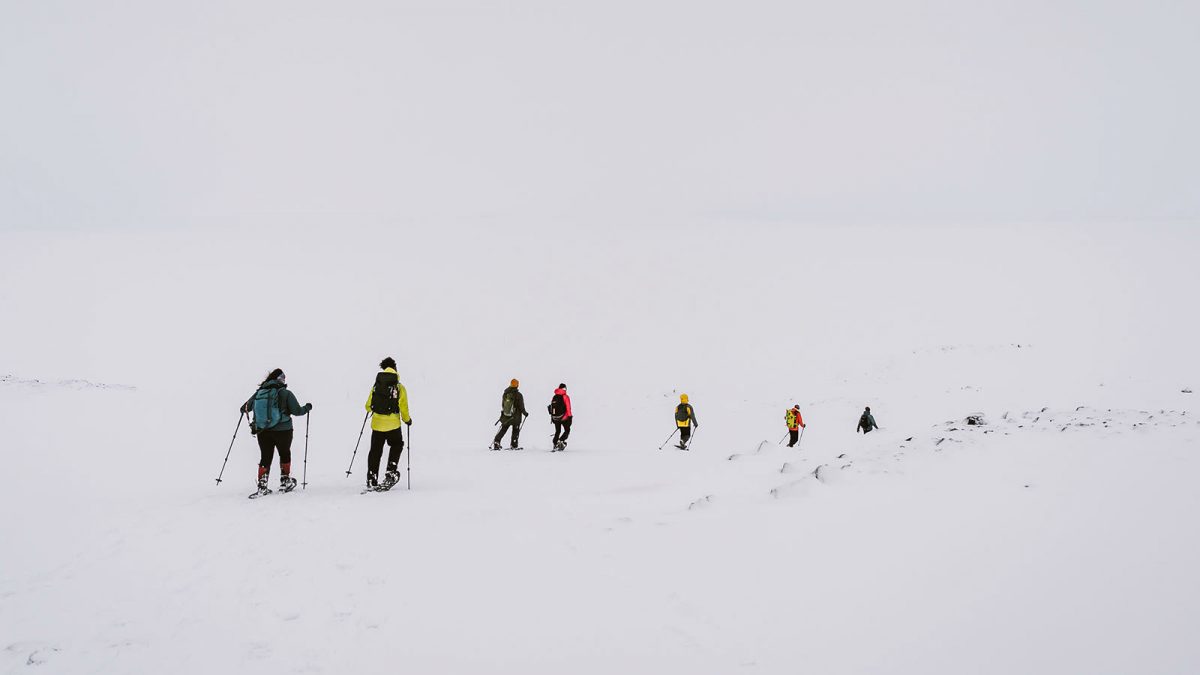Snow-covered landscapes, early nights and crisp mornings, a stillness impossible to describe—if you haven’t tried winter camping, you probably should. Without the swarms of mosquitoes and crowds of campers, you can experience all of the majesty of the outdoors minus the usual hassles.
But we won’t lie—if you don’t know what you’re doing, the experience can be cramped and uncomfortable, leaving you unlikely to want to repeat it. Before giving winter camping a go this season, consider these tips from REI members and the highly active Winter Camping Adventures Facebook group about what not to do in order to make the most of your time in the great (cold and snowy) outdoors.
Double-check your gear list before you go.
Winter camping aficionado Marian Godfrey-Sonntag, 45, realized she’d forgotten the poles to her tent last January, far too late. She’d just reached her camp in Algonquin Provincial Park near Toronto, Canada, with her gear stacked on her pulk sled when temps dropped to minus 13 degrees Fahrenheit. As a last resort, she and an engineer campmate devised a way to rig the tent to hang from the surrounding trees with a mishmash of rope and bungee cords—the same ones they’d used to fasten their camping equipment to their sleds during the trek in.
Now, she checks her gear list twice (and her tent setup thrice), but maintains it was the best trip she’s ever been on: “We laughed so much and enjoyed the weekend in a droopy tent,” she says.
Bring a backup stove, just in case your main stove malfunctions.
On a frosty December day in 2018, Jared MacKay, 36, an active member of the Winter Camping Adventures group, took to the mountains in Frontenac Provincial Park, just north of Kingston, Ontario, Canada, for one of his first cold-weather camping trips. He left his stove at home assuming he’d have a roaring fire to cook with as he did during most summer adventures (most provincial parks allow deadwood harvesting). What MacKay didn’t account for was how tough it can be to differentiate between dry hardwood and wet softwood when they’re both frozen stiff. The wood looked the same on the outside and even on the inside when cut, but the waterlogged softwood wouldn’t burn when MacKay tried to light it.
A few hand-numbing hours later, via trial and error, he had his fire and his food, but he’ll never forget this lesson. Now he tells himself, “Two methods is one, and one is none.”

Pick the right method to transport your gear.
Fifteen years ago in the dead of winter, REI member Rob Cranfill, 64, took his brother-in-law and nephew to glamp at his cabin near Snoqualmie Pass, in the Washington Cascades. Heavy snowfall made the cabin inaccessible by car, so Cranfill strapped on his cross-country skis and his brother-in-law popped on his snowshoes for the mile-long trek in. To haul their gear and Cranfill’s then 5-year-old nephew, the men loaded up a backcountry sled made for hauling. The problem? They were plowing the heavy chariot through 18 inches of fresh, fluffy snow. Cranfill’s brother-in-law could only progress about 30 feet before the sled would topple over and his nephew and all their supplies would tumble out in the powder. Though the group finally made it to the cabin, it took hours.
Cranfill’s lesson? “Sometimes a sled isn’t the best option—do with less gear and carry it yourself.”
Find a camping spot that’s sheltered and prep your tent site by packing down the snow.
Just prior to a snowstorm in December 2005, REI member Shawn O’Neill, 41, and his friends piled into the car and headed to Lake Angeles in Olympic National Park for a winter camping extravaganza. Big, wet snowflakes were flying by the time they arrived, and they raced to set up camp before daylight ran out. They realized they’d forgotten their tent stakes, so they hopped in their shelter without dinner to keep it from blowing away in the ferocious conditions.
In the middle of the night, though, amid frigid temps and howling wind, O’Neill awoke in a divot. He assumed his body heat had melted the snow beneath him, and dozed off again. When he finally got up and exited the tent the next morning, he realized the group had pitched their tent on a slight incline. Overnight the whole thing—campers included—had slid 10 feet down the hill!
Now, he is meticulous about digging a flat platform for his tent. (And bringing snow stakes.)
Use two full-length pads (one foam and one self-inflating) to keep warm on snowy surfaces.
Some of us are craftier than others. REI member Ryan Hubbard, 24, is definitely on the innovative side. In November 2014, he headed to the Mount Pilchuck fire lookout in Washington’s Cascade Range with a good friend and a single tent. Unfortunately, when they reached their destination they realized the lookout was occupied and they’d both forgotten their sleeping pads, a winter camping essential that helps insulate campers from the freezing ground.
Unwilling to call off their adventure, Hubbard and his friend cut branches off nearby fir trees and constructed a haphazard platform for their tent to help insulate them from the snow. Hubbard said it actually wasn’t too bad of a solution, as long as he didn’t think too hard about the jabs to his back all night long. Since the trip, he’s learned about Leave No Trace principles and now would never cut branches off a live tree.
He’s also learned that two sleeping pads should be the first things he throws into his car on trips into the snow.

Pee before bed. That way, your body uses a little less energy to stay warm.
Nearly all her supplies froze as soon as REI member Louisa Peck, 59, set them down on the frozen ground. She was winter camping during a cold snap in November 2018, in Washington state’s high alpine Spider Meadows, and though she knew it would be chilly, she didn’t anticipate the intensity of the single-digit temps she encountered in her summer tent. By 5:30pm, it was simply too frigid to sit outside talking to her friends, so she turned in for the night.
She poured boiling water into two Nalgenes and tucked them into the silk liner inside her sleeping bag to stay warm. Before bedding down, she pulled a down quilt over herself and slid two sets of hand warmers next to her skin—one in her socks and another near her chest. But in the hustle of getting ready for bed, she forgot to pee.
Thus, to her dismay, she awoke in the middle of the night needing to go. Unable to hold it and unwilling to brave the cold, she peed right into the top of her Jetboil. By morning it was frozen solid. (And she was down a stove.)
She hasn’t forgotten to pee before bed (especially on bitterly cold nights) since.
Keep your boots inside your tent and your liners and insoles inside your sleeping bag at night.
In February 2018, Jennifer Dickson Tooley, a Scouts Canada leader in her late 40s, was out with her troop on a cold winter night at a camp in southern Ontario. She discovered that one of her scouts was unable to put on her boots because she’d left them outside her tent overnight and they were frozen solid. To make things worse, the girl’s previously dry socks were damp and her feet nearly numb.
The ensuing scene was a sight to behold. Tooley squatted in the vestibule of the girl’s tent, tucked the scout’s bare feet under her armpits to warm them and began whacking the girl’s boots together to break off the ice. The entire time, the scout lay in the tent howling with laughter and shivering frantically.
Before long Tooley had warmed up the scout, found her some fresh socks and stuck toe warmers in her much-less-icy shoes. The girl, now a few years older, still reminds her of the experience. In response, Tooley jokes with her saying, “Keep [your] boots dry so we don’t have to retest if my armpits smell more than [your] feet.”
Travel with friends—but choose them wisely.
REI member Teresa Hagerty, 40, knew something was wrong. At first it was the giggling. Then it was the smell. She was tucked into her tent with her husband in Mount Rainier National Park on Valentine’s Day in 2015. It was twenty degrees outside, but they were warm and together, alone on the mountain in one of the most romantic outdoor places in the world. But Hagerty realized she had made one massive mistake: suggesting Mexican food the night before.
“My husband is … warm, supportive, funny, intelligent, adventurous and flatulent,” she wrote in a rather-funny email. “I had failed to anticipate the impact of these attributes for this trip. I spent my Valentine’s Day listening to him giggle before being temporarily smothered in a cloud of four-season-tent-constrained stench. It was not romantic.”
